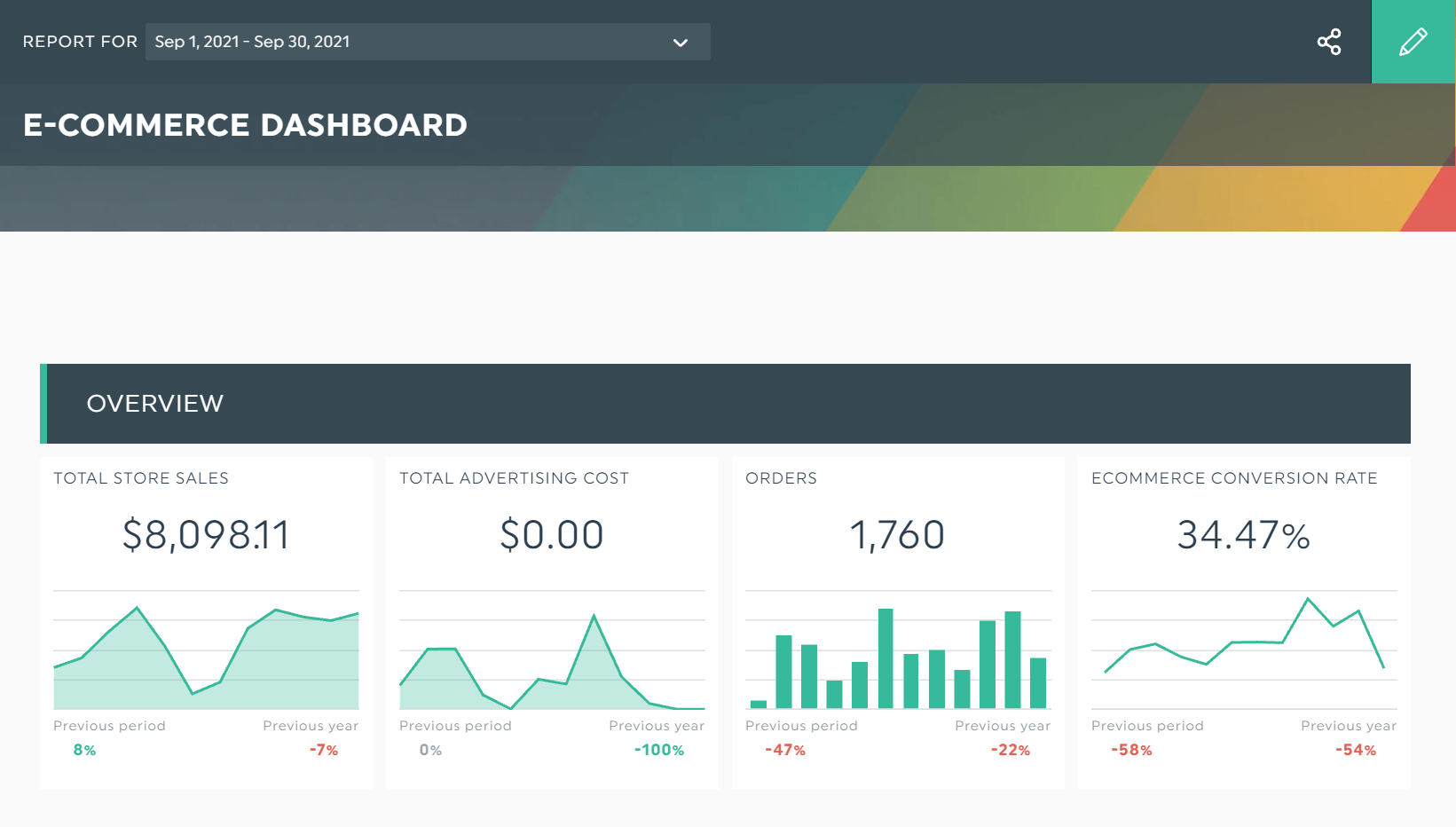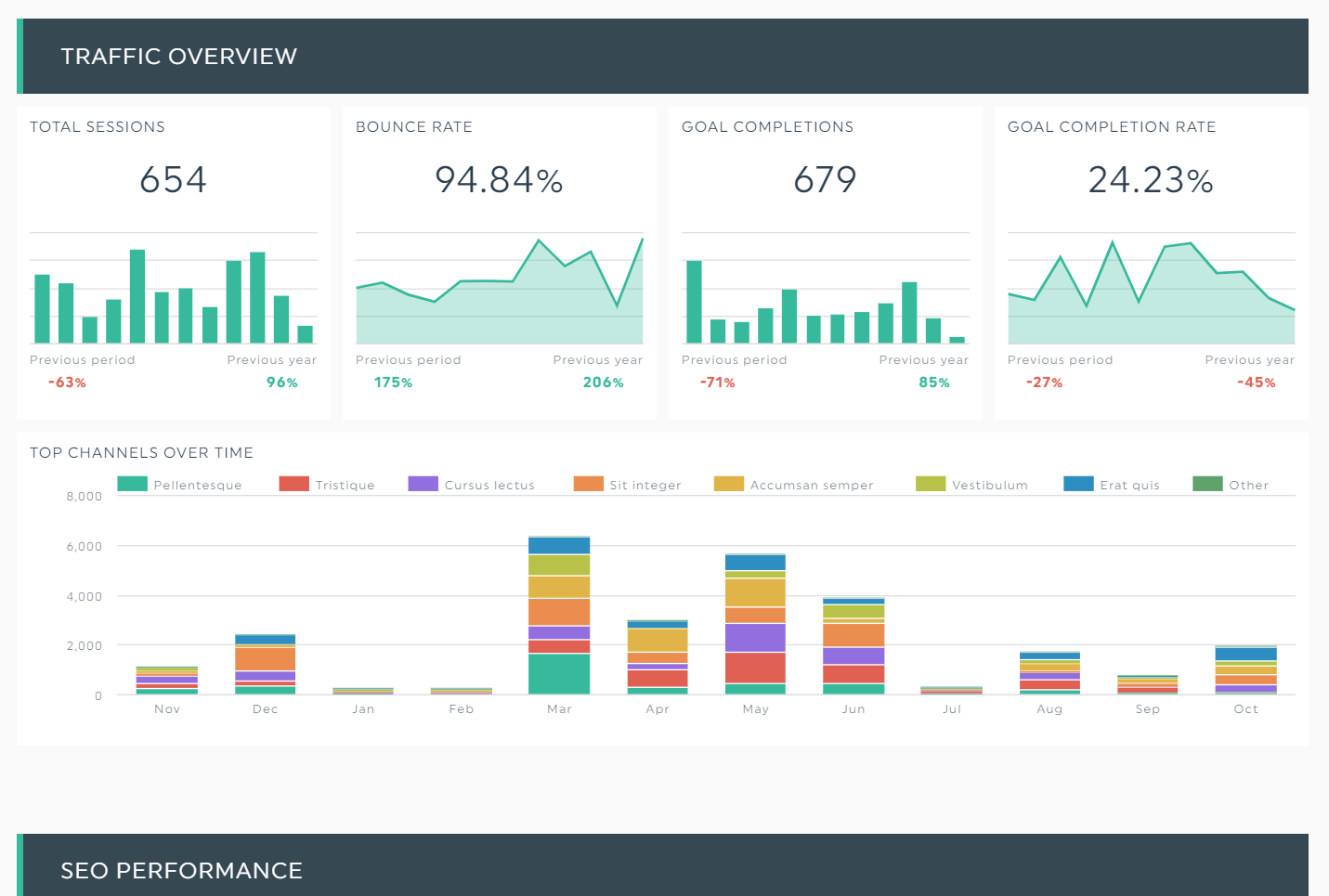15+ Essential Ecommerce Metrics for Your Reporting Dashboard

This post was first written by Mark from Cosina.dk but was recently refreshed to include more metrics.
After four years of running the b2b ecommerce store cosina.dk I know the importance of tracking and understanding the most essential ecommerce metrics, particularely for ecommerce retailers. Without this data, I wouldn't know if we're on track to achieve our company goals and I definitely wouldn't know which marketing activities are creating value and which are not.
That is why I would like to share the 10 ecommerce metrics I use in my monthly report.
Get this e-commerce report with your own data.
Let's dive into the most important ecommerce metrics so that you can get started with your new ecommerce report right away.
- 1. Total revenue
- 2. number of transactions
- 3. Average order value (AOV)
- 4. Average conversion rate
- 5. Shopping cart abandonment rate
- 6. Top 10 performing products
- 7. Total traffic (users)
- 8. Traffic sources
- 9. Number of top organic keywords
- 10. Customer acquisition cost for paid traffic
- 11. Customer lifetime value (CLV)
- 12. Bounce rate
- 13. Email campaigns metrics
Sales metrics
Now, what are sales metrics?
In short, sales metrics are data points that either directly or indirectly indicate your business' ability to generate revenue. You can use these metrics to create goals or KPI's (Key Performance Indicators) for your team and company as a whole. Ecommerce sales metrics specifically help you to measure the success of your online visibility, your web content, product pages, and your product offerings.
1. Total revenue

First and foremost you need to measure your total online revenue. Although this does not help you evaluate your day-to-day activities and ecommerce marketing strategies, it does tell you whether you are on track to achieve your annual sales goals.
If you find out that you are no longer on track to reach your targeted online revenue you will have time to inform your stakeholders about your new revenue expectations. Maybe you will also evaluate and possibly change your marketing strategy and product pricing. It's also a good idea to track your revenue and your cost together to have a better idea of your performance. If you got 2x the revenue, but it costs twice as much, is it really better for your the bottom line?
Total revenue is automatically tracked in Google Analytics if you have set up ecommerce tracking. If you haven't done that yet, stop reading this article right away and set up ecommerce tracking. But please come back when you're done!
2. Number of transactions

The total number of transactions is a valuable online sales metric to measure, and just like total revenue, it is tracked in Google Analytics. Knowing that you are increasing the number of transactions in your online store shows that you are successful in getting new customers or retaining existing customers.
3. Average order value (AOV)

Generating more transactions is not a winning tactic if your average order value is declining without you knowing. That is why you need to monitor the AOV as a metric in your reporting dashboard. If you use DashThis for dashboard reporting you can import AOV via Google Analytics ecommerce tracking.
From a personal perspective, I have experienced a massive drop in AOV over the last couple of years in my own ecommerce business. That is the result of a change in our product portfolio as we have expanded our selection of lower-priced products. Luckily this has improved our number of transactions, therefore generating more revenue.
If you see a drop in your average order value, you need to analyze the causes of this change. There's generally a good explanation for it.
4. Average conversion rate

Your ability to convert users into paying customers is the most valuable competence of an ecommerce manager. The more you can improve your sales conversion rate the more you can allow yourself to spend on ads and other activities that generate traffic to your shop.
While it is most important that you track the average ecommerce conversion rate across all traffic, you might also want to break it down into the different traffic channels. That way you can see which marketing activities are performing below average and you can develop a strategy to improve the experience for that group of users.
5. Shopping cart abandonment rate
In order to maximize your average conversion rate, you need to have a shopping cart experience that converts.
This is where the shopping cart abandonment rate comes in. This metric tells you whether you are able to close the sale in the last steps of the buying process.
If many users are abandoning their cart it could be a result of a bad checkout process. Is the design messy or are the functions not intuitive? Are you forgetting to inform the average customer about your return policies, payment options, shipping costs and so on?
Set up this metric in your dashboard and make a goal of improving your abandonment rate with x percent over a given period. This will incentivize your CRO, UX or ecommerce managers to improve the shopping cart performance.
6. Top 10 performing products
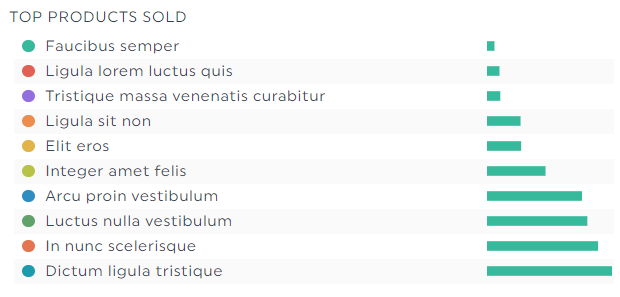
The last ecommerce sales metric that I recommend is a table of the 10 best-selling products, either by revenue or the amount of sold items. This way you will know if you sell the most profitable products on a weekly or monthly basis depending on the frequency of your reports.
Most ecommerce stores have many different brands and suppliers. This means that some products are sold at a low margin and others at a high margin. For that reason, you need to push the most profitable products on your ecommerce site, either organically or through paid marketing. Only by setting up this metric in your sales dashboard you will know if you are turning over the right products.
Digital marketing metrics
Marketing metrics are measurable data points that demonstrate the success of your different marketing activities. For your ecommerce store, you can track marketing metrics that help you to evaluate your paid campaigns, social media campaigns, email marketing campaigns, and your overall ability to attract potential customers to your shop.
In order to keep your reporting simple and relevant, I suggest these key metrics.
7. Total traffic (users)

Revenue comes from customers and customers are a result of traffic to your website, it's the start of your sales funnel. You know as well as anybody that not all traffic sources are equally valuable. And not all people are ready to buy.
However, each person you get in touch with is a potential customer down the road. That is why total traffic is a great key metric to evaluate long term ecommerce success. That's why you should track the number of visitors that comes to your website.
8. Traffic sources

In order to get a better understanding of your marketing efforts, you will need to add an extra table to your report where you split traffic into different traffic sources. Well... Actually both traffic sources and traffic channels.
Because when you evaluate your SEO team and PPC team you cannot just track traffic from Google, Bing, and so on. You will need to know how much traffic is from the channels organic search (SEO) and paid search (PPC).
If you put resources into big and expensive campaigns you could also create a table with the top 5 or 10 campaigns. Remember that you need to add UTM parameters to your campaign URLs in order to track them individually in Google Analytics.
9. Number of top organic keywords

For most ecommerce businesses the best traffic-generating source is organic search from Google. At least this is the case in my online business.
That is why I suggest you track the amount of top organic keywords in the top 3, top 5 or top 10 search results on Google. That is a great way to evaluate your search engine optimization (SEO) activities. An even better metric, if your rank tracking provider offers it, is the share of voice or total visibility of all your keywords.
10. Customer acquisition cost for paid traffic
Finally, you should measure the customer acquisition cost for your paid traffic such as Google Ads and Facebook Ads.
The CAC (customer acquisition cost) is calculated like this:
Total cost of paid traffic / total sales from paid traffic = CAC
If your only paid traffic is from Google Ads you will find the total cost in Google Analytics (as long as your Analytics account is linked to your Ads account). If you get paid traffic from Facebook Ads or others, you will have to add those costs.
The total sales from paid traffic is also found in Google Analytics with ecommerce tracking set up.
The customer acquisition cost should always be lower than the customer lifetime value.
11. Customer lifetime value (CLV)
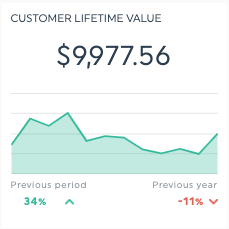
The customer lifetime value measures the total amount of what you earn from an average customer over their lifetime. knowing this metric will help you know how much you should invest in each new customer.
12. Bounce rate

How much of your website traffic doesn't reach another page after landing on your website? If the bounce rate is too high on your landing pages, particularly as an ecommerce site, you might need to optimize your pages or analyze if the intent is right. Some conversion rate optimization might also be needed.
13. Email campaigns metrics
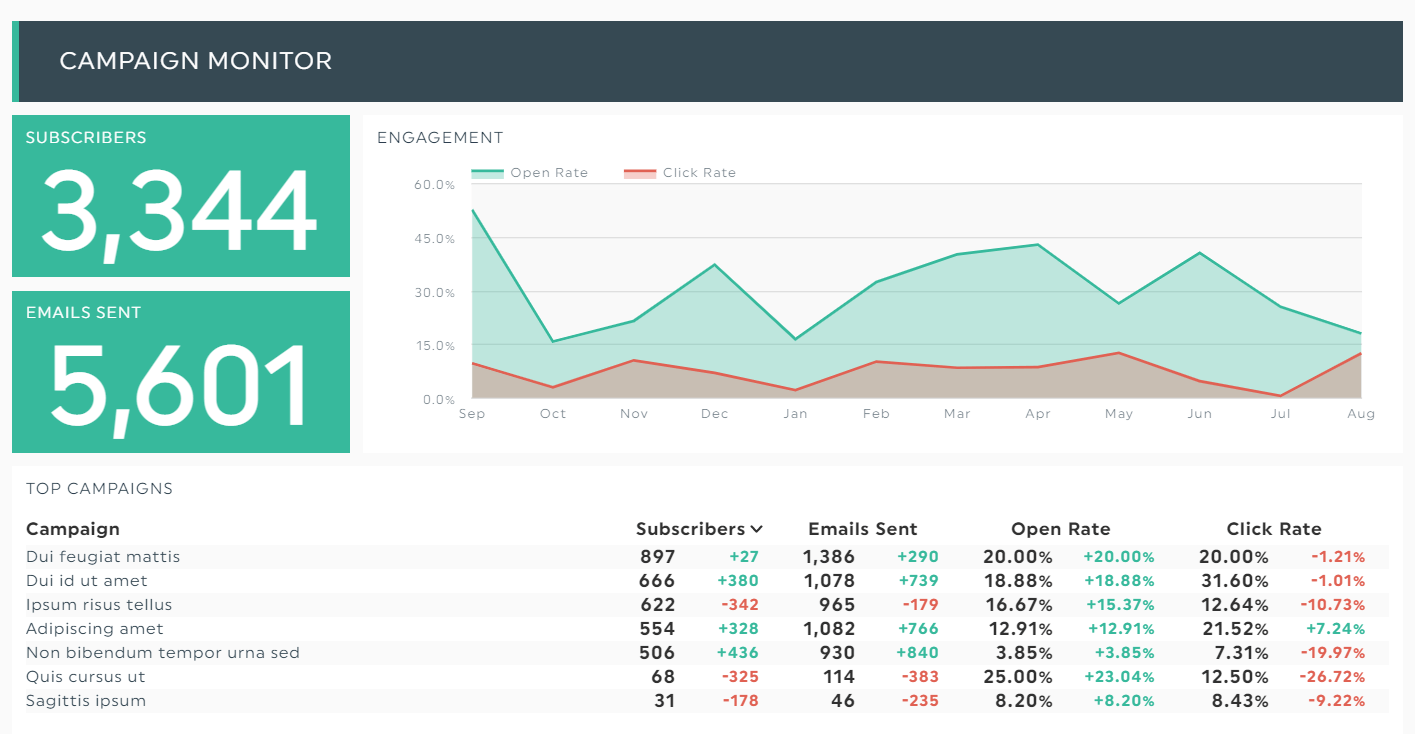
You need to track your email campaigns, as it is one of the most useful and effective marketing channels out there. You can track metrics such as open rate, the unsubscribe rate, the email list (number of people on the list through time), click-through rate and the number of customers coming from your email strategies.
Customer satisfaction metrics
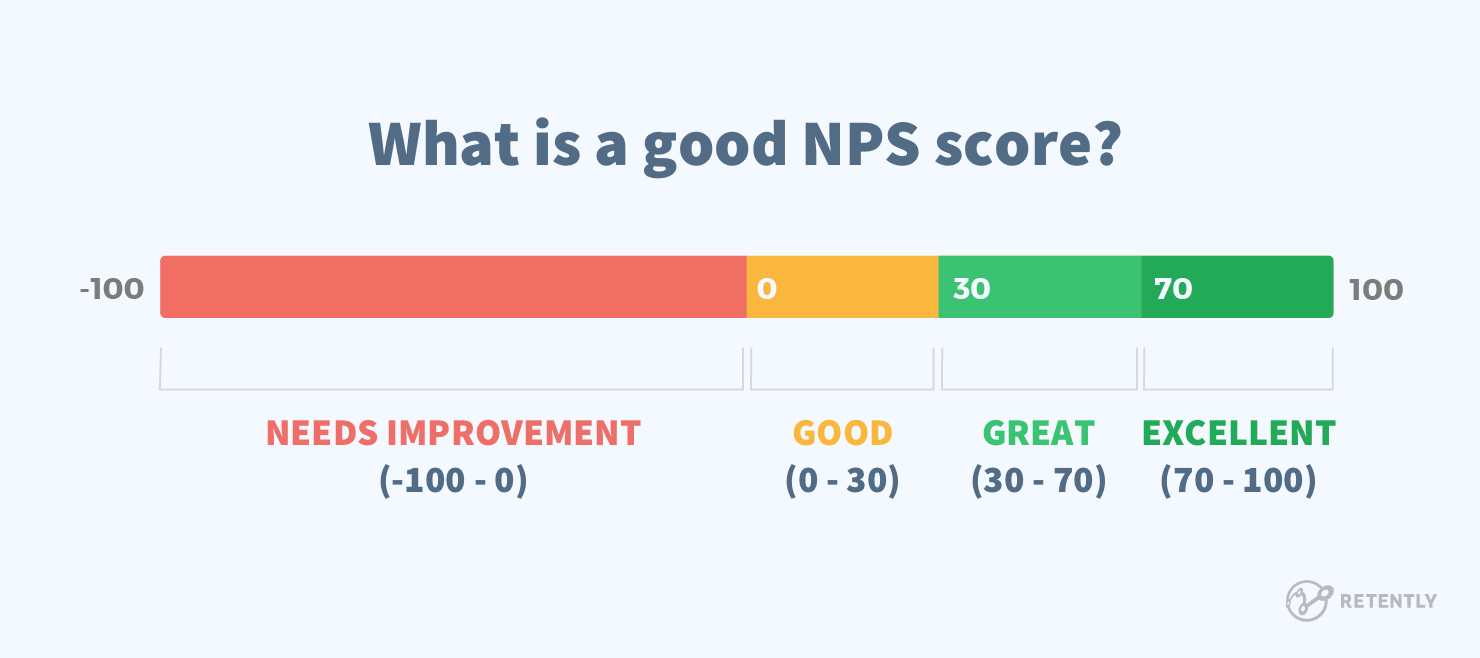
(source)
You can use customer satisfaction metrics to improve your website's experience, products, checkout experience, and more.
14. Number of repeat customers
The total amount of returning customers that came back to buy on your website, you can also track repeat purchases, to have a better idea of what product your customers are liking most, and the number of orders, to see if they frequently or not.
15. Net promoter score (NPS)
User experience is very important, so don't forget to track the NPS, or net promoter score, it's basically a survey that measures how likely your customers would be to recommend your products or services. It can help you know more about your customer loyalty and the customer experience your users are having on your ecommerce website.
Make sure to track these metrics in an ecommerce report
Alright. You should now be set up to get started with your ecommerce reporting.
You might start out with a simple excel sheet to keep track of your data. But as time goes by you might decide to use a professional reporting dashboard to save time and to impress your stakeholders. I recommend DashThis for this purpose because it is easy to set up and it allows you to present your ecommerce metrics, social media and PPC metrics in a visually appealing dashboard.
DashThis automates your reporting and tracks all marketing channels with a few clicks of the button.
It’s easy to pull these different sets of data together in your marketing dashboard:
- Connect your marketing channels to DashThis
- Click the ecommerce report
- Edit your KPIs
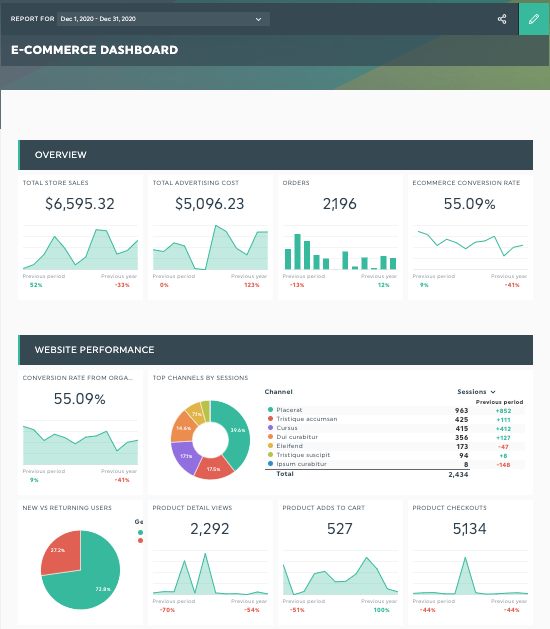
Get this ecommerce template for free.
DashThis automatically inserts your KPIs, saving you the time and effort to copy-paste them.
What’s more, sharing is easy. Here are three ways to present your report to clients.
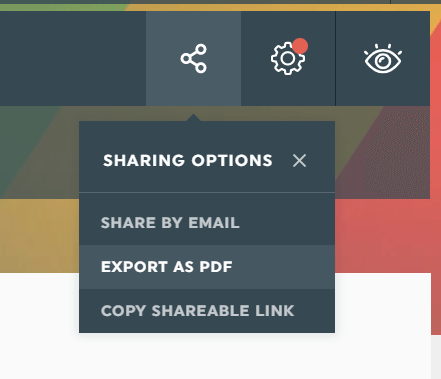
You can export it as an ecommerce report PDF, share it by email, or send a shareable link.
Track all your ecommerce KPIs in one easy-to-use, good-looking dashboard!
Ready to automate your reporting?
Read More
Don’t miss out!
Automate your reports!
Bring all your marketing data into one automated report.
Try dashthis for free
